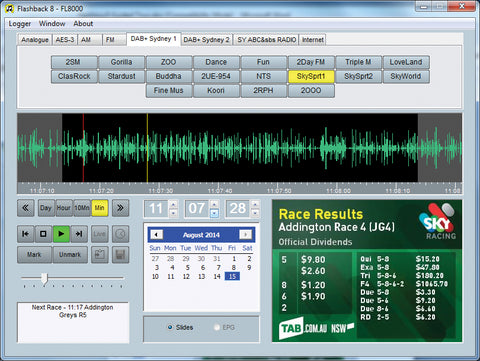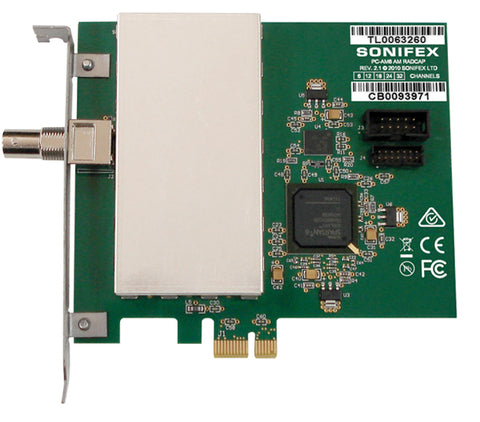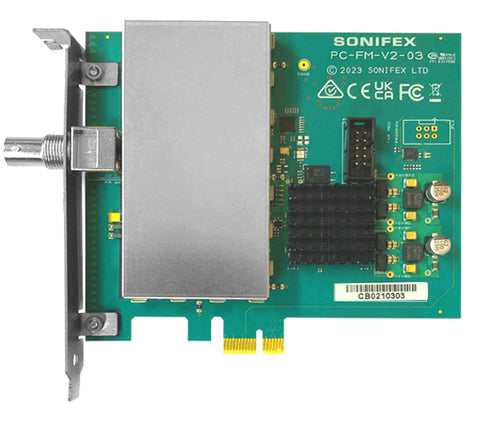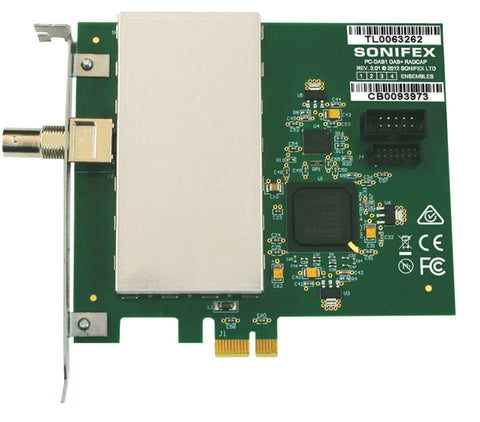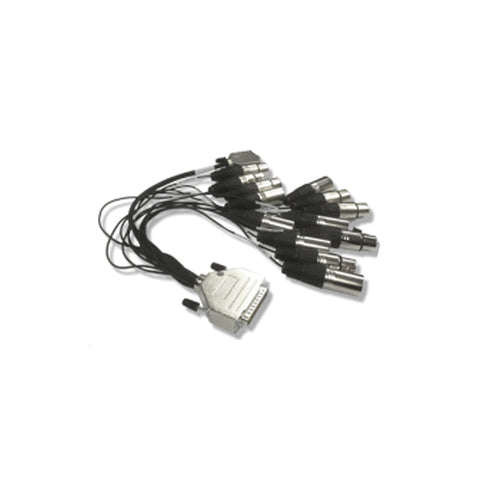Sonifex RB-MTV1 Contribution Voiceover Monitor with Talkback
Vendor: Sonifex
Available

Sonifex RB-MTV1 Contribution Voiceover Monitor with Talkback
For use in voice-over booths, news booths, commentary spots, continuity announcements, and other similar applications where voice needs to be added to program content and subsequently monitored, the RB-MTV1 contribution voiceover monitor is a 1U rack-mount device. It is possible to record and keep an eye on talkback, auxiliary, and program streams.
There are two outputs and four inputs on the RB-MTV1. Its XLR mono microphone input features changeable fine gain control via a multi-turn preset potentiometer and switching coarse gain, providing an overall gain range of +20dB to +80dB. Additionally, there is a switched level limiting control, switched +48V phantom power, and switched LF rumbling filter. The threshold at which the limiter activates can be changed from -8dBu to +26dBu using a multi-turn preset potentiometer on the back panel. A blue LED is used to indicate the limiter's functioning, and a straightforward 5-LED meter is used to track the microphone level. The meter can be configured to either show the MIC signal activity in normal operation, i.e. when TALK is pressed the meter is off, or the meters can permanently show the MIC activity even when the TALK button is on or the MIC button is off. XLR features a mono balanced TALKBACK input. The device features two balanced XLR stereo inputs, CUE and programme (PGM), each equipped with an input gain control of 10dB to enable the utilization of unbalanced sources such PC audio cards and home CD players.
With separate volume controls, the front and rear headphone outputs allow for the mixing and monitoring of each of these inputs—MIC, TALKBACK, CUE, and PGM. Using two banks of DIPswitches on the underside of the device, one bank for audio heard in the left ear piece and one bank for audio monitored in the right ear piece, one can configure which of the inputs is delivered to the headphone outputs. As an illustration, the TALK signal might be transmitted to the right earpiece and all other signals to both earpieces, or the left and right PGM inputs could be sent to the right earpiece and all other signals to the left earpiece. In this way, you can configure the unit for your particular application on installation. If a presenter doesn’t like to hear themselves in their headphones when using the TALK button, there is also a DIPswitch option to mute the mic signal to the headphones.
Two mono balanced outputs are present. When the latching front panel MIC button is activated—the button illuminates—the processed microphone signal is routed to the two outputs. Push controls on the back panel allow you to independently set the two primary outputs to be at "Line" or "Mic" level outputs. The unit can be placed into a mixer's microphone channel by setting the output to a microphone level. For those times when you wish to have the MIC channel open all the time, you have the ability to permanently enable the MIC button, even when it is being operated remotely. Furthermore, the CUE input can be permanently mixed as a mono feed to the outputs.
The front panel's "TALK" button is a push switch that, when pressed briefly, directs the processed microphone signal to the "LAZY" TALK output while cutting it off from the other outputs so the operator can speak with a coworker. This makes it possible for two or more studios to use the device as a talkback intercom. There is a rear panel remotes connector giving remote control of the two front panel MIC and TALK buttons and opto-isolated tallies of their status. A red LED on the front panel of the unit indicates when power is present.
Audio Specification |
|
| Input Impedance: | 2kΩ nominal balanced MIC input >20kΩ all other inputs. |
| Maximum Input Level: | -10dBu MIC input +26dBu TALK, CUE & PGM inputs |
| Mic Gain Range: | Adjustable +20dB to +80dB |
| E.I.N.: | 130dB |
| Common Mode Rejection: | >60dB typically |
| Low Frequency Roll-Off: | 125Hz @ 6dB/octave |
| Distortion: | 0.01% THD @ 1kHz, ref +8dBu output |
| Phantom Power: | 48V |
| Limiter Threshold: | Adjustable +8dBu to +28dBu |
| Output Impedance: | <50Ω |
| Maximum Output Level: | +26dBu balanced outputs |
| Headphone Output Level: | Drives 150mW into 32Ω to 600Ω headphones |
| Frequency Response: | 20Hz to 20KHz ±0.1dB (ref 1KHz) |
Rear Panel Connections |
|
| Mic Input: | 1 x XLR 3 pin female (Balanced) |
| TALKBACK Input: | 1 x XLR 3 pin female (Balanced) |
| CUE Inputs: | 2 x XLR 3 pin female (Balanced) |
| PGM Inputs: | 2 x XLR 3 pin female (Balanced) |
| Output 1: | 1 x XLR 3 pin male (Balanced) |
| Output 2: | 1 x XLR 3 pin male (Balanced) |
| TALK (LAZY) Output: | 1 x XLR 3 pin male (Balanced) |
| Headphone Outputs: | 2 x ¼” (6.35mm) A-gauge 3-pole stereo jack sockets |
| Remote I/O Port: | 9-way ‘D’-type socket |
| Mains Input: | Filtered IEC, 110V-120V, or 220-240V switchable, fused, 9W maximum |
| Fuse Rating: | Anti-surge fuse 100mA 20 x 5mm (230VAC) Anti-surge fuse 250mA 20 x 5mm (115VAC) |
Equipment Type |
|
| RB-MTV1: | Contribution Voiceover Unit With Talkback |
Physical Specification |
|
| Dimensions (Raw): | 48cm (W) x 10.8cm (D) x 4.3cm (H) 19” (W) x 4.3” (D) x 1.7” (H) (1U) |
| Dimensions (Boxed): | 58.5cm (W) x 22.5cm (D) x 7cm (H) 23” (W) x 8.9” (D) x 2.8” (H) |
| Weight: | Nett: 1.3kg Gross: 1.9kg Nett: 2.9lbs Gross: 4.2lbs |
Accessories |
|
| RB-RK3: | 1U Rear panel rack kit for large Redboxes |
 USD
USD EUR
EUR
 AUD
AUD
 GBP
GBP
 JPY
JPY







